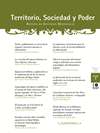Abstract
Resumen: El estudio del paisaje, la minuciosa recogida y análisis de la toponimia y el trabajo de campo nos sirven como fuentes para intentar comprender la evolución histórica del pequeño territorio de la aldea asturiana de Tene (Quirós). Partiendo de los primeros indicios de poblamiento en la zona, nos centramos en el estudio de la organización del territorio en época castreña, cuyo mejor testimonio son los poblados de El Picu Castiel.lu, Castro Mairín y El Castro. Desde ellos el poblamiento se trasladaría al actual núcleo de Tene, cuyo origen pudo ser una villa con nombre de posesor romano. En torno a ella se iría colonizando y explotando paulatinamente el espacio agrario, proceso que intentamos conocer siguiendo las pistas ofrecidas por los topónimos del lugar —fundamentalmente los antrotopónimos—, que permiten detectar lugares colonizados en la Alta, Plena y Baja Edad Media.
Palabras clave: poblamiento, explotación del territorio, toponimia, castros, villa, colonización.
Abstract: The detailed analysis of toponymy and landscape together with field work have been used to approach the historical evolution of the territory of the small village of Tene (Quirós, Asturias, N Spain). There are very few data on human presence prior to the hillfort or castreño period, from which two close settlements are known: El Picu Castiel.lu-Castro Mairín and El Castro. Later in the Tardoroman period, the original habitat transformed into a village in probable relation with socio-economical changes. During the castreño period, control of high pastures and communication should be crucial aspects for a prevailingly ranching society, which probably also practised rudimentary mining and agriculture.
As land cultivation gained importance, lower altitude and more fertile pastures began to be colonized in the surroundings of the new village, probably a villa with a Roman possesor. Around it lie older toponymies such as Pascarol, Cantuluture, Fondes de Vil.la o Fondes de Menel. We cannot provide the exact timing of the definite transformation of the hillfort into a village, whether it was sudden or slow, spontaneous or directed by landowners.
In the vicinity of the newly inhabited place —which might have originated in the El Quintanal area— the old landscape comprised wild wheat, millet and flaxseed crops with collective or semi-collective properties (La Morterina and El Casuergu), close to the path called Estrá. The Remolina waterwheels were built further away from Fondes de Menel to grind local cereal.
Colonization of progressively remote and less productive land continued in the following centuries. The anthroponyms permit us to follow that process from the High to the Low Middle Age, which eventually reached the territorial limits of other villages. These territories were long well-defined and exploited by all neighbours until individual appropriation of former communal land began.
Once Tene was definitively established, the agricultural and ranching exploitation spread all over its territory. This way of living has arrived to us with little adaptations, but it is in serious decline due to recent socio-economical changes, mostly detected in depopulation and population ageing.
Keywords: settlement, toponymy, castros, villa, colonization, agrarian exploitation.

